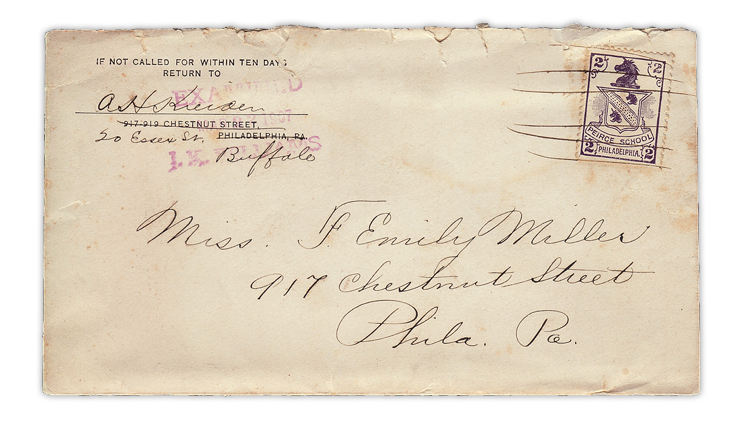US Stamps
Inside Linn’s: Unicorn stamps and business college practice mail

By Charles Snee
The Oct. 14 issue of Linn’s Stamp News just landed on the presses and goes in the mail to subscribers Monday, Sept. 30. And if you subscribe to Linn’s digital edition, you’re at the head of the line with early access Saturday, Sept. 28. Here are three brief glimpses of the content while you wait for your issue to land in your mailbox.
Unicorn stamps and business college practice mail
During the mid-19th and early 20th centuries, business colleges developed detailed course of study to prepare their students for a world before typewriters. As Wayne Youngblood details in The Odd Lot, some of these institutions printed their own stamps and created simulated post offices to provide practical, hands-on experience. As the cover and contents illustrated in his column demonstrate, the practice mail created at one college could be quite convincing, despite never having traveled through the U.S. mail system.
Unusual 1930s business reply mail returns deciphered
Tony Wawrukiewicz, in Modern U.S. Mail, continues his exploration of business reply mail envelopes with postage due stamps affixed. These mailings sometimes bear penciled numbers to indicate accounting for multiple returned items. One of the two covers illustrated in the column bears 99¢ in postage due stamps, which satisfied the 3¢ carrier drop rate for each of 33 returned reply envelopes. Read the entire column to learn what makes the other cover remarkable in Wawrukiewicz’s estimation.
Kitchen Table Philately: inexpensive stamps from 26 countries
In each weekly issue of Linn’s, either E. Rawolik VI or E. Rawolik VII dissects the contents of a stamp mixture offered to collectors. E. Rawolik is a pseudonym that is also the word “kiloware” (a stamp mixture) spelled backward. This week, E. Rawolik VII sorts through a sample of 65 stamps from a large worldwide assortment. He reports finding “many interesting stamps” among the 26 countries represented in the sample.
Connect with Linn’s Stamp News:
Sign up for our newsletter
Like us on Facebook
Follow us on Twitter
MORE RELATED ARTICLES
Headlines
-
US Stamps
Oct 7, 2024, 3 PMMcMurtrie dismissed as APS education director following Sept. 21 arrest
-
US Stamps
Oct 7, 2024, 12 PMVasiliauskas named president of Mystic Stamp Co.
-
US Stamps
Oct 6, 2024, 5 PMApgar souvenir card available
-
US Stamps
Oct 6, 2024, 4 PMFirst Continental Congress and U.N. stamps receive Scott catalog numbers








